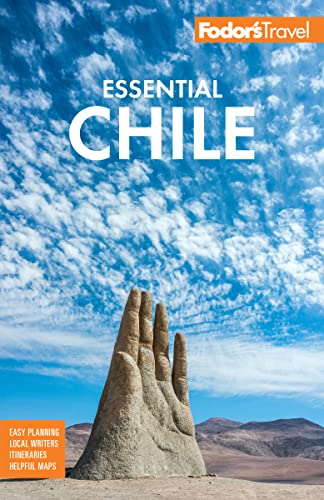Chile FAQs
How expensive is Chile?
Chile is among the most expensive countries in Latin America. Prices of hotels and transportation go up considerably from mid-December through mid-March and again in July and August.
What should I pack for a trip to Chile?
Many of Chile's attractions are outdoors, so packing sturdy, all-weather gear is a good idea. Sunglasses, a hat, and sunscreen are all musts because the ozone layer over Chile is particularly deteriorated. For your electronic gear, keep in mind that you will need a two-pronged plug adaptor and that voltage in Chile is 220 volts, 50 cycles (220V 50Hz).
Do I need to or should I rent a car? Is driving hectic?
You definitely don't need to rent a car in Santiago because you can take a combination of taxis, buses, and the metro to get around town. For day trips from Santiago to the coast or wine country, renting a car is probably the most convenient option, although buses to these destinations are also frequent and reasonably priced.
If you do rent a car, be aware of one-way streets and signs indicating right of way. You are not allowed to turn on red at a stoplight unless there is a specific sign indicating otherwise. To drive legally in Chile you need an international driver’s license as well as your valid national license, although car rental companies and police do not often enforce this.
Can I drive between Chile and Argentina?
Yes, you can drive between Chile and Argentina, but there are a few things to keep in mind. First, because it is an international border, be sure to have your passport, along with your driver's license. Also, special insurance is required.
If you rent a car, the rental company will provide you with a permit to drive into Argentina (for an extra price, of course), which includes all the necessary paperwork to cross the border (including the insurance). The permit must be requested several days in advance of the day the rental begins. The rental car must be returned in Chile, and the permit is valid for one exit to Argentina and one entrance into Chile. Common border crossings include the route from Santiago to Mendoza and Valdivia to Bariloche.
Do U.S. citizens still have to pay a reciprocity fee upon entering Chile?
No. Until early 2014, all U.S. citizens entering Chile for the first time had to pay a reciprocity fee of US$161 before passing customs. Because the United States recently made Chile a country eligible for its U.S. Visa Waiver Program, Chile has dropped the reciprocity fee for U.S. citizens.
Do I need to speak Spanish?
It is always helpful to speak the language of the country where you are traveling, but it is less crucial in Chile. Particularly in Santiago, there is generally at least one person who can speak basic English in most restaurants, hotels, and shops. However, if you plan on traveling to less tourist-oriented destinations, fewer people will speak English, and you may need to resort to nonverbal means of communication or trying out those basic Spanish phrases you’ve learned.




